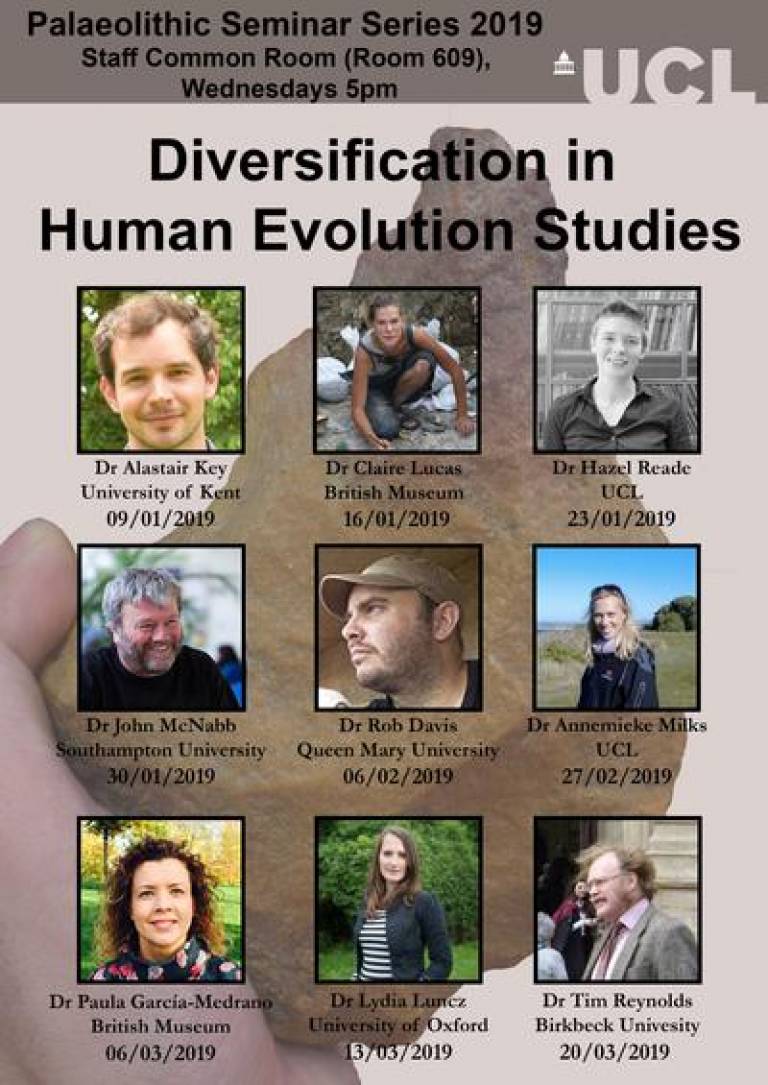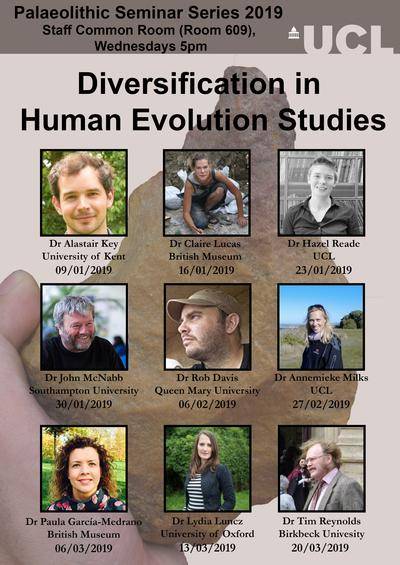The Palaeolithic of the Breckland: humans, technology and culture in a changing landscape
06 February 2019, 5:00 pm–6:00 pm

Event Information
Open to
- All
Location
-
Room 609, UCL Institute of Archaeology
Rob Davis (Queen Mary University of London) will give the next seminar in the new series on Diversification in Human Evolution Studies at the UCL Institute of Archaeology on 6 February.
Abstract
The Breckland of East Anglia has held a prominent position in British Palaeolithic studies since the beginning of the discipline. An early stamping ground of antiquarians during the mid to late 19th Century, the region was quickly recognised for the wealth of its Palaeolithic record and continues to be a major focus of Palaeolithic research. The region has a rich concentration of early Palaeolithic sites that provide a diverse stone tool record spanning 600,000 years, including Acheulean, Clactonian and Levallois assemblages, and the earliest evidence of human fire-use in northern Europe.
The area has undergone major landscape changes in response to Quaternary fluvial processes and glaciation of the region. These major phases of landscape development provide a stratigraphical and chronological framework within which the record of human presence can be considered. During the early Middle Pleistocene, the pre-Anglian Bytham River flowed eastwards across the region into the southern North Sea basin. In the Breckland there are a number of Palaeolithic sites associated with this river, where Lower Palaeolithic handaxes and scrapers represent human occupation of the region from approximately 600,000 years ago. This drainage system was destroyed by glaciation during the Anglian Stage, some 450,000 years ago. The retreat of the Anglian glaciers left a landscape of lakes, ponds and new rivers in which sediments accumulated during the following warm period, the Hoxnian Interglacial, about 400,000 years ago. These contain a rich record of fauna and flora with evidence of human occupation around their margins. The modern drainage network including rivers such as the Lark and Little Ouse also became established, comprising a series of river terraces containing stone tools that chart changes in technology from 400,000 to 40,000 years ago.
This important geological sequence and its rich archaeological and environmental records can be used to address critical questions concerning the relationships between people, culture and technology in a changing landscape through deep time. The Breckland's pre-Anglian record feeds into debates regarding the prerequisites for successful colonisation of northern latitudes and the timing of the spread of Acheulean technology into northern Europe. The Hoxnian Interglacial sites at Barnham, Beeches Pit and Elveden are crucial components of Britain's fine-tuned MIS 11 record, which provides insights into the factors underlying the myriad of variation in lithic technology in Europe at this time. The modern river sites can be compared with other regional records such as the Thames and the Solent to explore regional patterns in technology and cultural identity during the Palaeolithic.
Any enquiries about the event may be directed to Tomos Proffitt.
 Close
Close


